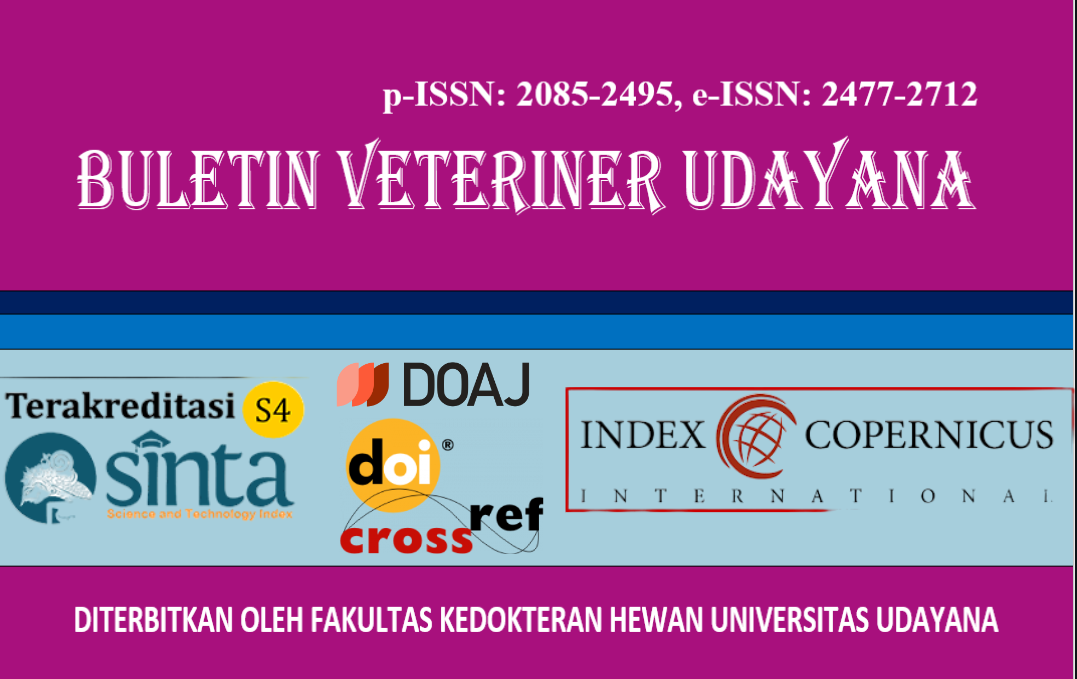CASE OF COLISEPTICEMIA IN BROILER CHICKEN AT CLOSED HOUSE FARM IN JIMBARAN, BADUNG REGENCY, BALI
DOI:
https://doi.org/10.24843/bulvet.2025.v17.i04.p01Keywords:
E. coli, APEC, Colisepticemia, Escherichia coli, Broiler ChickensAbstract
Avian Pathogenic Escherichia coli (APEC) is a pathogenic strain of E. coli that can cause systemic infections in poultry, leading to colisepticemia in chickens. This condition reduces productivity and increases financial losses for farmers. This case study aims to obtain a definitive diagnosis of the disease affecting 21-day-old broiler chickens in a farm located in Jimbaran, South Kuta District, Badung Regency, Bali. The methods used include clinical symptom observation, epidemiological analysis, anatomical pathology, histopathology, and laboratory examinations for bacteriology and parasitology. The observed symptoms included weakness, decreased appetite and water intake, dull and stiff feathers, diarrhea, and the presence of solidified yellowish-white feces around the cloaca. Epidemiological analysis revealed that the farm had approximately ±10,000 chickens, with around ±1,800 chickens exhibiting similar symptoms and approximately ±500 deaths. The morbidity rate was 18%, the mortality rate was 5%, and the case fatality rate (CFR) was 27.8%. Gross pathology examination showed the presence of fibrin in the abdominal and thoracic areas, covering the heart, liver, lungs, and kidneys. Histopathological examination revealed inflammation accompanied by heterophil inflammatory cell infiltration, necrosis, edema, hemorrhage, and congestion. Bacteriological examination was conducted by isolating bacteria using general and selective media, supported by Gram staining, catalase test, biochemical tests, and glucose fermentation tests, confirming the presence of Escherichia coli in the heart, liver, lungs, and intestines. Parasitological examination using native, sedimentation, and flotation methods on fecal samples showed no parasitic infection. The study concludes that the chickens were diagnosed with colisepticemia without any parasitic infection. Prevention measures should focus on maintaining biosecurity and farm sanitation to minimize infections caused by various pathogenic agents.




